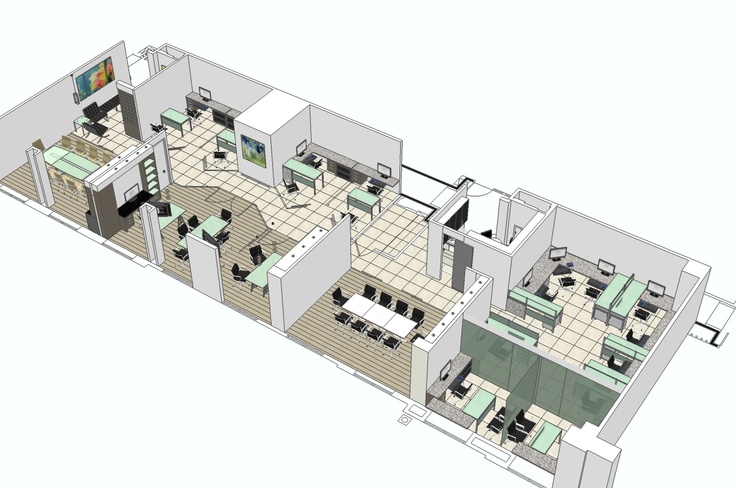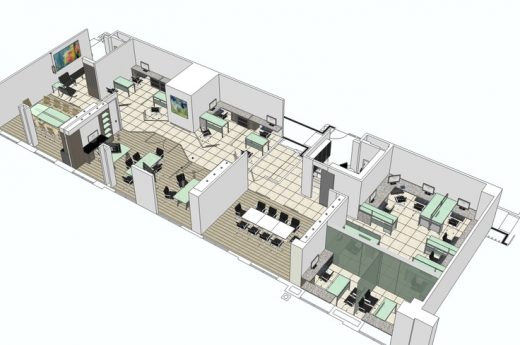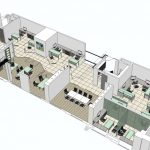4 Reasons to Change Your Office Layout
May 7, 2016

Company culture is growing increasingly important. How does your office layout affect your office culture?
With the advent of startups and ‘startup culture’, plus millennials placing such a strong emphasis on workplace enjoyment, many companies are looking more closely at their own culture.
The buzzwords these days are ‘transparency,’ ‘openness,’ ‘freedom,’ and ‘learning,’ but how can a company actually achieve these things?
While there are many factors that comprise a company culture, an undeniably large part of it is office layout and design.
How you create your office and its accompanying atmosphere play a large role in what your company culture will be.
What are the most important elements of office layout, as it relates to company culture?
Physical Disorganization Leads to Actual Disorganization
In creating the best work environment for your employees, you want to give them a space that they feel comfortable and productive in.
An office with clutter, excess garbage, disorganized seating or general untidiness can feel claustrophobic and even unsanitary.
It’s shown that clean work spaces make people feel more energized and happy. Energized and happy people are infinitely more productive.
Have processes in place for organization. This will do more than help you get organized; it will have a dramatic impact on office culture.
- It might help to invest in a weekly cleaning crew to come in and take care of the deep clutter and grime that an office naturally acquires over time.
- Make sure your team is reminded weekly (or even daily) about the importance of organization and keeping a tidy workspace. Inspirational signs can help, but signs that directly remind your team about cleaning up after themselves might be more effective.
Corner Offices Can Have Some Drawbacks
This is a relatively recent issue, with startups beginning a new wave of leaders and CEOs who act as “one of the team.” This leads to less demand for corner offices and more demand for open office layouts where there are no doors and very little privacy.
There are two sides to this coin. Maybe your company office isn’t a super casual hangout, and that’s ok. Distinguishing the C-suite from the worker-bees is still acceptable, especially when the two are not necessarily integrated in day-to-day operations.
The point with having leaders sit amongst their employees serves a couple different purposes: the first is open communication. Small organizations especially need to have top-down and bottom-up communication that is not intimidating or difficult to navigate. By having management exist as one with the rest of the company, you can create an atmosphere of openness and trust.
The second reason is to give leaders a real perspective on the day-to-day operations.
Because of this extra insight, they may be better prepared to make decisions quickly, or put out fires as they come up. But (and this a strong but).. employees shouldn’t feel like they’re being babysat or micromanaged. A boss who sits with employees shouldn’t make them feel as if their every move is being watched. This breeds insecurity and a feeling of distrust.
Remember, some companies just work better when a leader has a clear distinction from the rest of the pack. It all depends on what you want the atmosphere and culture of your organization to be, and it can be done as simply as those in leadership positions having their own office, or grouped in with everyone else.
Seating people together can foster collaboration
In the classic corporate set-up, departments are often separated.
Finance goes on this side, sales goes over here, tech support is by the kitchen, and the account managers are huddled in the center…you get the idea.
While this type of set-up can help battle that pesky disorganization we talked about earlier, it can also make for a very broken up company.
We’re learning more and more how valuable each department of a company is for all aspects of a business.
The marketing department needs a lot more than just marketers in it. Often there is a blend of customer service, sales, the tech and design teams, and finance who each have at least a pinky of a hand in the marketing department mix.
If you want to create a company culture of collaboration and support, you should consider putting departments side-by-side, or have an open floor plan in your office.
When a question comes up that your marketing associate needs to ask a customer service representative, they can quickly jump over to their desk to get an answer. Or by seating team members at tables together, without cubicle walls separating everyone, you can create a culture of fluid communication where employees are encouraged to talk to each other openly.
If you’d rather have a culture of autonomy or independence, consider incorporating quiet work rooms for employees to hide away if/when need be.
Or allow employees to work from home a couple days a week. Whichever cultural value you choose to emulate in your business, it’s important to consider the actual physical layout of your office space.
Startup Culture: Dos and Don’ts
It’s the word on everyone’s lips and what millennials are dreaming of: the startup culture.
Its implications seemingly are: cool offices, great work perks, unlimited vacations, free lunch, and 80 hour work weeks.
Why is so much focus being put on working in a fun and vibrant environment? Some would argue that it increases employee morale, and makes the daily grind more bearable.
But a company is only as good as the product it sells, and the people it employs. So let’s talk about some of the lessons we can all learn from the “startup culture.”
- A flashy office is great, but don’t put yourself in debt or waste too much time finding the perfect office space. If your company is solid, people will enjoy working there whether there are beanbag chairs in a one million dollar conference room or not. Do find a space that suits your needs well.
- Consider the elements. Sound and light are factors for a positive work environment. If the sun glares in every morning on the screens of computers, your team will be annoyed. But also don’t stick your employees in a basement. Vitamin D is good for your workers health and well-being. Just be thoughtful about the layout of your space, and how it affects people doing their jobs.
- Do seriously consider the values you want your company culture to emulate. Then support those values in your physical space. Do you value creativity? Education? Life experiences? Sharing? Health and wellness? Practice what you preach. All too often companies want their culture to be about one or more of these things, but you can’t just talk the talk. If your space doesn’t reflect you core values, your employees and your customers will sense it.
For example, if you value learning and education, allow employees to sit in on webinars during work hours.
Give employees access to books online for research/and or reading for enjoyment as a way to expand their horizons.
Don’t just say you value something and that it’s part of your culture, and not make good on it. Sure, as a company you can value education, but if you aren’t actually fostering a work atmosphere that supports that, then maybe you need to reassess what values you are truly emulating.
When you begin to see how the layout and atmosphere of your working space has an effect on your company culture, then you can do more to leverage the physical space you have for the benefit of everyone.
It’s also important to remember to ask your employees from time to time about how changing things up may help them to do their jobs better, or enjoy work a little more.
Happy employees often translates to happy customers, so you should see an investment in your office space, culture, and employee happiness, as a solid business plan.
Business & Finance Articles on Business 2 Community
(41)













